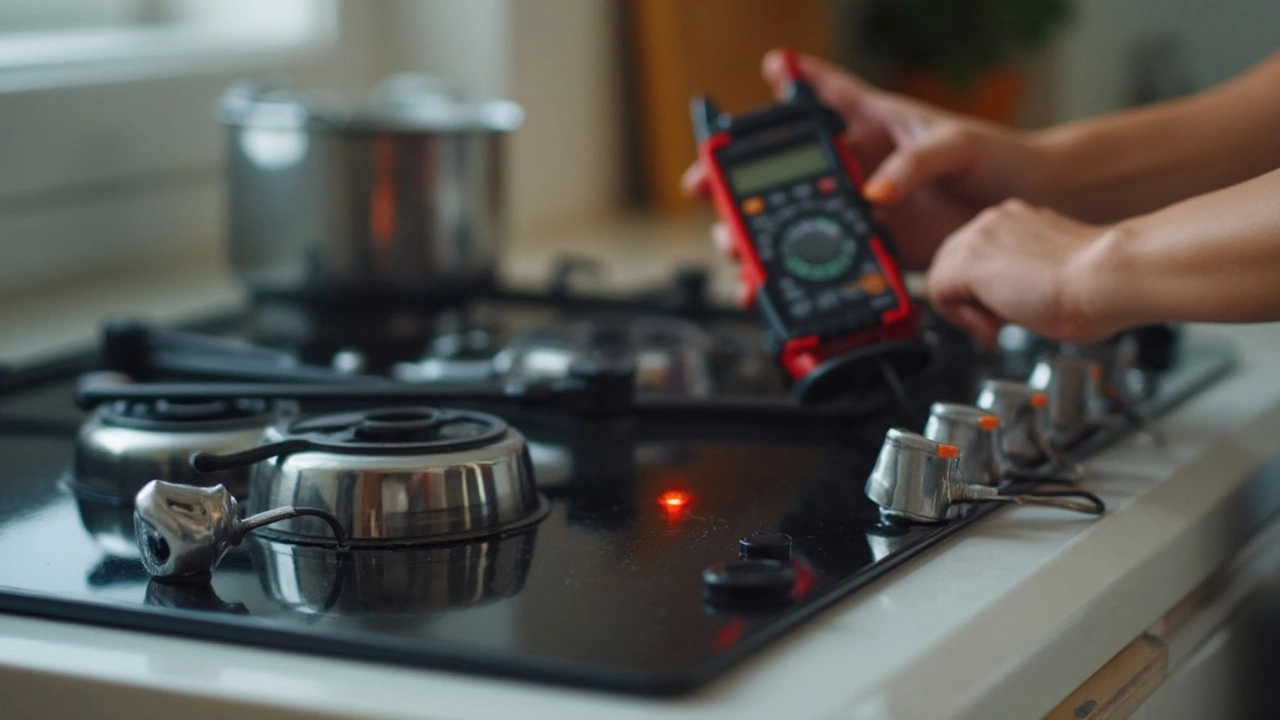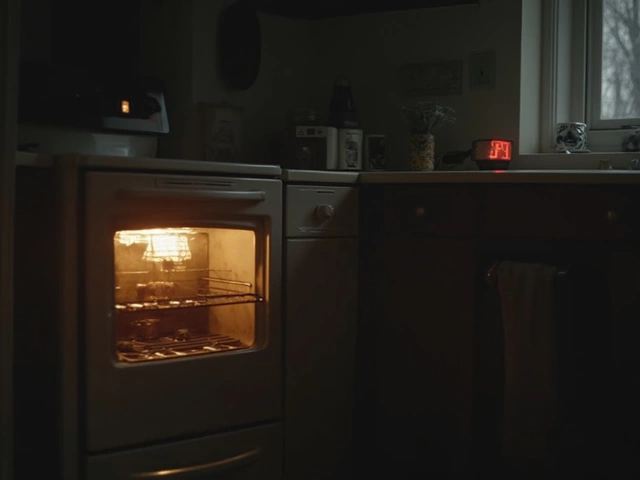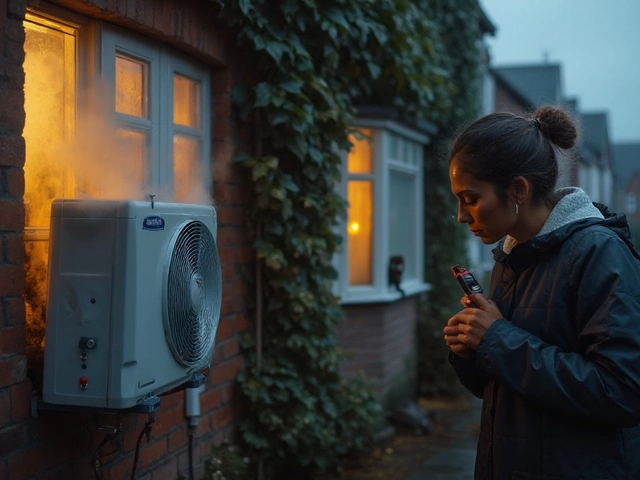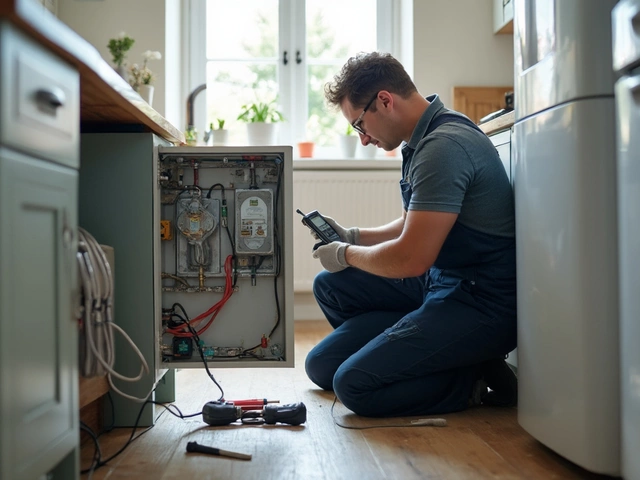Ever turned on your hob, only to find it’s stone cold and dinner plans are out the window? You’re not alone. Electric hobs are basically the workhorses of the kitchen, but like anything electrical, they can go on the blink. The good news is, a lot of the time, fixing them is totally doable and way cheaper than shelling out for a new one.
Before grabbing your toolbox (or your phone to call in a pro), it’s smart to know what actually goes wrong with these things. Sometimes it’s just a blown fuse, a dodgy control knob, or a wiring fault. Other times, you might be dealing with a cracked glass top or burnt-out heating element. Knowing the difference can save you time, cash, and maybe even spare you the pain of eating takeout for the third night in a row.
- How Electric Hobs Work and Common Problems
- When Can I Repair an Electric Hob Myself?
- Signs That Your Hob Needs a Professional
- Tips to Prevent Future Hob Problems
- Knowing When to Repair or Replace
How Electric Hobs Work and Common Problems
Electric hobs look pretty simple on the surface, but inside, there's a bit more going on. At their core, they use heating elements (usually metal coils or hidden under a glass/ceramic plate) that warm up when electricity passes through. The basic setup is: you twist the control knob, electricity flows, the element heats up, and your food starts cooking.
Most modern electric hobs use thermostats or sensors to keep the temperature steady. If you’ve got one of those flat glass styles, they probably use either radiant heat (like a really hot toaster) or induction, which heats the pan using magnetic fields. Induction hobs are pretty cool—they’re fast and only the pan gets hot, not the actual hob surface.
Here’s a quick breakdown of what’s inside a standard electric hob:
- Heating elements
- Thermostats and sensors
- Control knobs or touch panels
- Circuit boards (for the fancy ones)
- Power wires and safety fuses
Electric hobs do a lot, so naturally, things can go wrong. Here are the common issues almost everyone deals with at some point:
- electric hob repair needed because the element isn’t warming up at all
- One or more zones heat unevenly or not at all
- The control knob spins but nothing happens
- Touch panel doesn’t respond (for the high-tech types)
- Burning smell or unusual noise
- Glass or ceramic surface cracks
Sometimes, these problems are annoying but not dangerous—blown fuses or worn-out elements are usually cheap and easy to swap out. But if you notice sparks, tripped breakers, or burnt smells, cut the power and get it looked at ASAP. Those are warning signs you don’t want to ignore.
| Problem | Frequency | DIY Fix Rate |
|---|---|---|
| Heating element fails | 38% | 62% |
| Faulty control knobs | 25% | 75% |
| Glass surface cracked | 15% | 10% |
| Unresponsive touch controls | 10% | 30% |
| Burning smell/noise | 12% | 8% |
The main thing is, most faults are fixable—and some you can tackle yourself if you’re careful. But for anything electrical that seems fishy or unsafe, calling a pro is just safer.
When Can I Repair an Electric Hob Myself?
Here’s the deal: a lot of common electric hob hiccups are stuff you can absolutely sort out if you’re comfortable with household repairs. If your hob just isn’t heating up or a single ring is refusing to work, don’t assume the worst. Sometimes it’s as simple as a old fuse, loose wire, or burnt-out heating element. But before you do anything, switch off the power at the mains. Safety first, always.
You might be surprised at how many small repairs just need a bit of patience, a screwdriver, and a new part. For example, replacing a worn-out control knob or swapping a broken indicator light can take less than 30 minutes. Most manufacturers sell replacement parts online, and there are plenty of step-by-step guides and videos if you get stuck. Here are some fixes you can usually handle yourself:
- Electric hob repair for blown fuses: These are cheap and simple to change. If the fuse keeps blowing, though, that's a bigger problem.
- Replacing faulty knobs: They can crack or spin loosely and are easy to pull off and snap a fresh one in place.
- Cleaning or reconnecting loose wires under the hob: Carefully check that nothing's come unplugged if you’re comfortable with electrics.
- Replacing a single burner plate: Swap it out if one particular ring won’t heat.
If you’re dealing with a glass hob top, be careful. Small cracks mean you need a replacement glass panel—never just glue it back. Anything to do with the main power wiring or the circuit board is best left for a pro, unless you’ve got electrical qualifications.
Still unsure what’s usually a simple fix at home? Check out this table for a quick guide:
| Problem | DIY Potential? | Parts Needed |
|---|---|---|
| Knob broken/off | Yes | Replacement knob |
| Indicator light not working | Yes | New bulb/light |
| Burner won’t heat up | Sometimes | Replacement burner |
| Cracked glass top | No | Professional replacement |
| Unit trips fuse box repeatedly | No | Professional inspection |
So if your hob problem is small and you’re confident with basic repairs, there’s a good chance you can tackle it yourself. Just don’t mess with wiring or circuits if you’re not sure—it’s not worth the shock (literally) or risking your kitchen.

Signs That Your Hob Needs a Professional
Sometimes an electric hob just won’t cooperate, no matter what you try. If you’re running into trouble that looks risky or is beyond basic fixes, it’s usually best to skip the guesswork and call for a pro. Here’s how to spot the warning signs.
- Electric hob repair becomes risky if you ever see sparks, smell burning, or notice scorch marks around the controls. These are real fire hazards, not just annoyances.
- If the hob trips your home’s circuit breaker more than once, you’re probably dealing with a short circuit or damaged internal wiring. That kind of fault isn’t something to mess with unless you really know what you’re doing.
- A cracked glass surface isn’t just an eyesore—it’s a safety nightmare. Spills can seep into live electrical parts, leading to shocks or worse. Replacing toughened glass on your own is tricky and rarely goes well without the right tools.
- If every cooking zone is dead, instead of just one, the problem probably isn't just the heating elements. This hints at bigger electrical issues, like a failed control board or terminal block.
- Any weird smells—especially that sharp, burning plastic scent—could mean overheating wires or a failing component inside the hob.
Modern induction and touch-control hobs are packed with electronics. When they start glitching and resetting, or lights start flashing with error codes you can’t clear, DIY fixes hit a wall fast. Sometimes, just opening the thing up can wreck the warranty, so it pays to check with a qualified electric hob engineer instead of poking around blindly.
Sure, calling a pro costs money, but safety’s worth it. Trying to fix serious electrical issues without training can land you with a broken appliance—or worse, a trip to the hospital. It’s just not worth the risk for anything more complicated than swapping out a knob or cleaning contacts. When in doubt, grab your phone and book a technician.
Tips to Prevent Future Hob Problems
If you want your electric hob to go the distance, regular care isn’t optional—it’s a must. Most of the annoying breakdowns happen because dirt, spills, or neglect sneak up over time. Here’s how to keep things running right:
- Wipe up spills as they happen. Sugary stuff can burn onto the plates or glass, melting and messing up the internals if it seeps down. Even water spills can cause corrosion if left.
- Check the knobs and dials every month. If they feel loose or “sticky,” take them off and clean underneath. Bits of food or grease can build up and stop the connection working properly.
- Don’t slam pots or drag pans across the surface, especially with ceramic or glass hobs. It’s easier to crack than you think. Even a tiny crack can ruin the heating element or get bigger over time.
- Ventilate your kitchen well. Trapped moisture is bad news for the wiring and components underneath. Run the extractor fan or open a window when you’re cooking up steam.
- Every six months, give your hob a once-over. Check for cracks, burnt spots, warped rings, or weird smells when it heats up. It’s way better to catch a small problem early than deal with a full-on breakdown later.
And if you’re thinking, “How long should an electric hob actually last if I treat it right?” Here’s what to expect based on real numbers:
| Hob Type | Average Lifespan (Years) | Common Failure Point |
|---|---|---|
| Ceramic | 10-15 | Heating element burnout |
| Induction | 10-12 | Control board failure |
| Solid Plate | 12-16 | Element corrosion |
One last thing: never ignore weird noises, flickering lights, or strong electrical smells when your hob’s on. These are sure signs something’s not right. The sooner you check them out (or get a pro in), the less damage you’ll deal with—and the less you’ll have to spend on electric hob repair later.

Knowing When to Repair or Replace
Here's the thing: not every broken hob is worth rescuing. Deciding when to repair and when to chuck it comes down to cost, safety, and age.
If your electric hob is still pretty new and the fault is minor—say, a single ring won’t heat or a knob’s stuck—it makes sense to fix it. Swapping out a blown heating element or replacing a knob is usually quick, and parts are pretty affordable. But if your hob keeps acting up, or if issues start piling up one after another, you're looking at more expense and hassle than it's worth.
There's a simple rule called the “50% Rule” experts use: if repair costs are more than half the price of a new hob, just get a new one. It’s rarely worth pouring cash into something that might break down again next month.
Safety is a biggie. Things like serious wiring issues, visible scorch marks, or a cracked glass top can quickly turn into hazards. If you see any of these signs, don't try to patch it up yourself. Call a pro—or better yet, check if the repair is even safe or allowed at all, especially with older units.
Let’s look at some points to help you decide:
- How old is your hob? Most last around 10–15 years. If yours is pushing that, it might be time for a replacement.
- Is it under warranty? If yes, repairs could cost nothing.
- Are parts still available? For older or discontinued models, spare parts can be pricey or impossible to find.
- Do you have recurring problems? Constant issues mean deeper faults and wasted money.
Here’s a quick snapshot of how things stack up when deciding on electric hob repair or replacement:
| Situation | Repair? | Replace? |
|---|---|---|
| Minor fault (e.g. one ring not working) | ✔️ | |
| Multiple recurring issues | ✔️ | |
| Severe wiring/safety problems | ✔️ | |
| Parts no longer available | ✔️ | |
| Hob under 5 years old, simple fault | ✔️ | |
| Glass top cracked | ✔️ | |
| Repair cost over 50% of new price | ✔️ |
One last thing—sometimes energy usage is a sign too. Modern hobs are way more efficient. If the old one’s driving up electricity bills or cooking unevenly, a replacement can actually save you money long-term.





